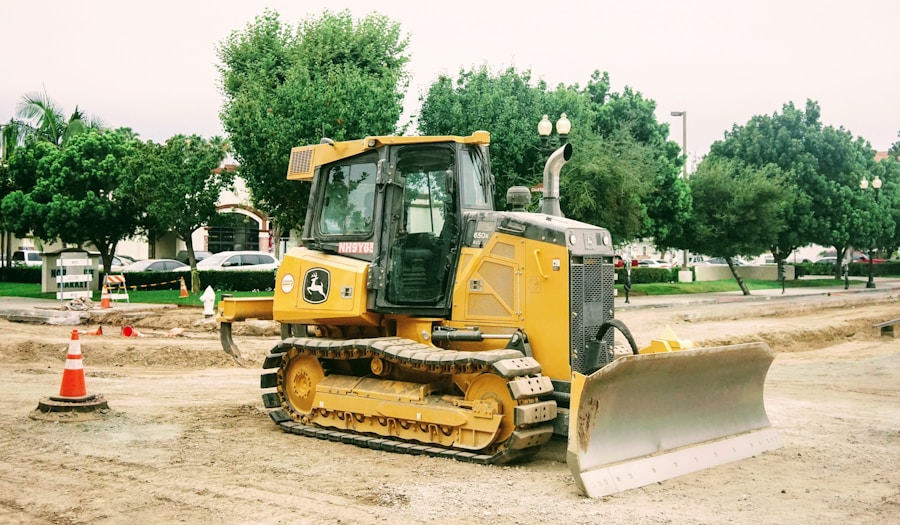When embarking on a construction project, it is crucial to have a clear understanding of the project scope and requirements. This involves identifying the specific goals and objectives of the project, as well as the constraints and limitations that may impact the construction process. This includes understanding the size and scale of the project, the intended use of the structure, and any special requirements or features that need to be incorporated. Additionally, it is important to consider the timeline for the project, as well as any potential challenges or risks that may arise during the construction process.
In order to effectively understand the project scope and requirements, it is essential to engage in thorough communication and collaboration with all stakeholders involved in the project. This includes the client, architects, engineers, and any other parties who have a vested interest in the successful completion of the project. By engaging in open and transparent communication, it is possible to ensure that everyone is on the same page and that there is a clear understanding of what needs to be achieved. This can help to prevent misunderstandings or miscommunications that could potentially derail the project.
Selecting the Right Materials and Techniques
Selecting the right materials and techniques for a construction project is a critical step in ensuring its success. This involves carefully considering the specific requirements of the project, as well as the unique characteristics of different materials and construction techniques. It is important to take into account factors such as durability, cost, sustainability, and aesthetic appeal when making these decisions. Additionally, it is essential to consider any special requirements or regulations that may impact the selection of materials and techniques.
In order to select the right materials and techniques, it is important to conduct thorough research and analysis. This may involve consulting with experts in the field, conducting tests and experiments, and evaluating the pros and cons of different options. It is also important to consider the long-term implications of these decisions, as well as any potential maintenance or durability issues that may arise. By taking a comprehensive approach to this process, it is possible to make informed decisions that will contribute to the overall success of the project.
Compliance with Government Regulations and Standards
Compliance with government regulations and standards is a critical consideration in any construction project. This involves ensuring that all aspects of the project, from design to construction, meet the necessary legal requirements and standards set forth by local, state, and federal authorities. This includes adhering to building codes, zoning regulations, environmental regulations, and any other relevant laws or standards that may apply to the project. Failure to comply with these regulations can result in costly delays, fines, or even legal action.
In order to ensure compliance with government regulations and standards, it is important to engage with experts who have a thorough understanding of these requirements. This may involve working with architects, engineers, and legal professionals who can provide guidance and advice on how to navigate these complex regulations. It is also important to stay informed about any changes or updates to these regulations that may impact the project. By taking a proactive approach to compliance, it is possible to avoid potential pitfalls and ensure that the project proceeds smoothly.
Budgeting and Cost Considerations
Budgeting and cost considerations are fundamental aspects of any construction project. It is essential to carefully plan and manage the budget in order to ensure that the project remains financially viable and on track for completion. This involves accurately estimating the costs associated with materials, labor, equipment, permits, and any other expenses that may arise during the construction process. It is also important to consider potential cost overruns or unforeseen expenses that may impact the budget.
In order to effectively manage budgeting and cost considerations, it is important to engage in thorough planning and analysis. This may involve creating detailed cost estimates, conducting feasibility studies, and identifying potential cost-saving opportunities. It is also important to establish clear communication and accountability regarding budget management among all stakeholders involved in the project. By taking a proactive approach to budgeting and cost considerations, it is possible to minimize financial risks and ensure that the project remains on solid financial footing.
Collaboration with Stakeholders and Contractors
Collaboration with stakeholders and contractors is a key factor in ensuring the success of a construction project. This involves engaging in open and transparent communication with all parties involved in the project, including clients, architects, engineers, subcontractors, suppliers, and regulatory authorities. By fostering strong relationships and collaboration among these stakeholders, it is possible to ensure that everyone is aligned with the goals and objectives of the project.
In order to effectively collaborate with stakeholders and contractors, it is important to establish clear lines of communication and accountability. This may involve holding regular meetings, providing progress updates, and addressing any concerns or issues that may arise during the construction process. It is also important to establish clear roles and responsibilities for each party involved in the project in order to minimize confusion or misunderstandings. By fostering a collaborative environment, it is possible to create a strong foundation for success and ensure that everyone is working towards a common goal.
Environmental Impact and Sustainability
Considering the environmental impact and sustainability of a construction project is becoming increasingly important in today’s world. This involves carefully evaluating the potential environmental effects of the project, as well as identifying opportunities to minimize its carbon footprint and promote sustainability. This may include using environmentally friendly materials, implementing energy-efficient design principles, reducing waste and pollution, and considering the long-term environmental implications of the project.
In order to effectively address environmental impact and sustainability considerations, it is important to engage with experts who have a thorough understanding of these issues. This may involve working with environmental consultants, sustainability experts, and green building professionals who can provide guidance on how to minimize environmental impact throughout the construction process. It is also important to stay informed about any new developments or technologies that may offer opportunities for improving sustainability. By taking a proactive approach to environmental impact and sustainability, it is possible to create a construction project that not only meets its objectives but also contributes positively to the environment.
Maintenance and Long-Term Durability
Considering maintenance and long-term durability is essential for ensuring that a construction project remains functional and attractive for years to come. This involves carefully selecting materials and construction techniques that are designed to withstand wear and tear over time, as well as implementing maintenance plans that will keep the structure in good condition. It is also important to consider factors such as climate, usage patterns, and potential hazards that may impact the long-term durability of the structure.
In order to effectively address maintenance and long-term durability considerations, it is important to engage in thorough planning and analysis. This may involve conducting lifecycle cost analyses, developing maintenance schedules, and identifying potential risks or vulnerabilities that may impact the structure over time. It is also important to engage with experts who have a thorough understanding of maintenance best practices in order to develop effective strategies for preserving the structure’s integrity. By taking a proactive approach to maintenance and long-term durability, it is possible to ensure that the construction project remains a valuable asset for years to come.
In conclusion, successfully managing a construction project involves careful consideration of a wide range of factors including scope and requirements, materials and techniques selection, compliance with regulations and standards, budgeting and cost considerations, collaboration with stakeholders and contractors, environmental impact and sustainability, as well as maintenance and long-term durability. By taking a comprehensive approach to these considerations, it is possible to ensure that a construction project proceeds smoothly while meeting its objectives in a sustainable manner.

